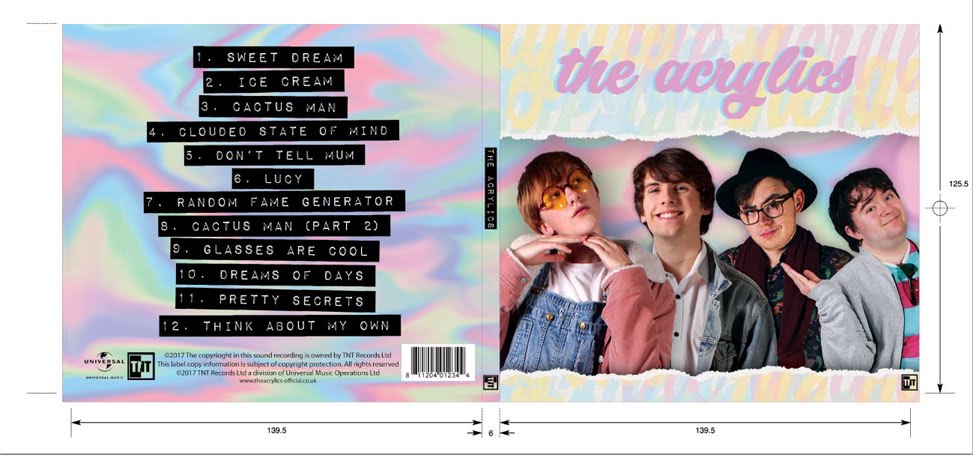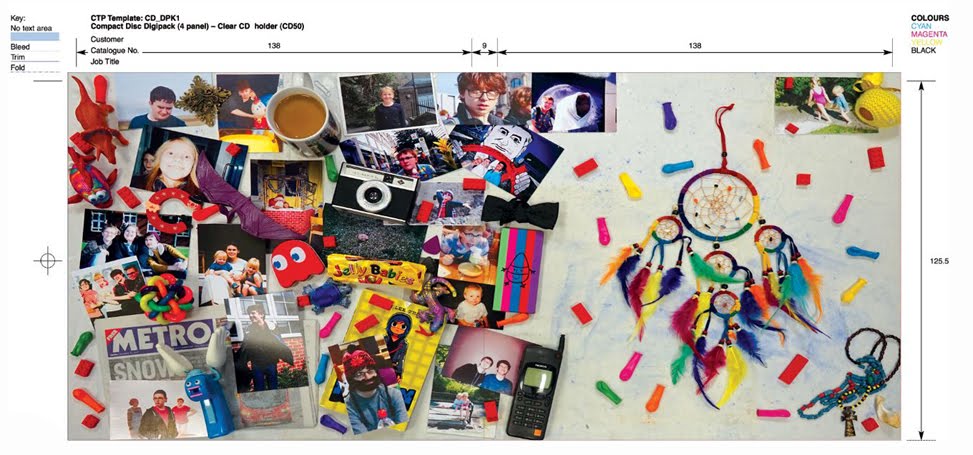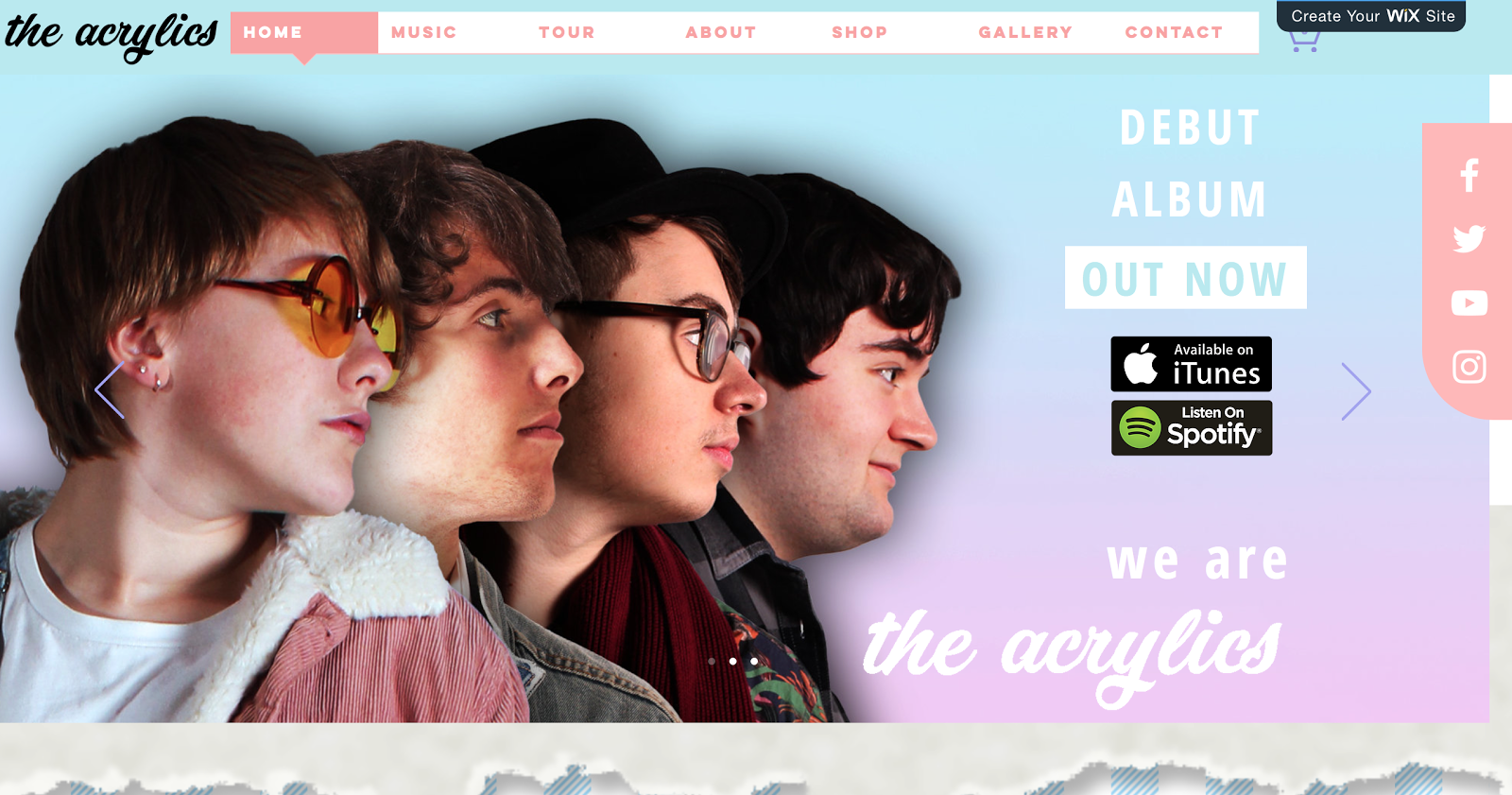Our main product was our music video, and our two ancillary products were our album cover and website. Our three products are mostly conventional, using a lot of the conventions of the indie pop genre, and the distinctive form of the music video. However, the three products do also develop and challenge some of the form and genre conventions, particularly in regards to challenging the sexualisation of female artists. Overall, I believe we have created a professional standard promotional package for our artist that will appeal to our target audience.
GENRE
Our band, The Acrylics, produces music of the indie pop genre.
Andrew Goodwin states that 'music videos demonstrate genre characteristics'. In the presentation below, I will demonstrate how we understood the characteristics of the indie pop genre and attributed them to our three media texts.
Please read my presentation below to find out more. Navigate the presentation using the scrollers seen on the right and bottom of the screen.
Indie pop is a genre that originated from alternative rock in the UK during the 1980s. It is a more melodic and less abrasive than indie rock, and does not contain the angst that is so iconic of the iconic music of indie rock. This extends to the look of the band, which too demonstrates a more acceptable, 'pretty' appearance in areas like colour scheme and fashion. Indie pop is also much more commercially viable, as the values and lyrical content in the music is a lot more marketable for a general audience. However, indie pop still has a low reach; due to its distinguishably smaller budget, many indie pop artists often cannot afford the same advertising privileges as pop musicians, such as billboards and televisual advertisements.
Please read my presentation below to find out more. Navigate the presentation using the scrollers seen on the right and bottom of the screen.
FORM
MUSIC VIDEO
The form of the music video is very distinct. Few other media art forms are able to have such a wide disjuncture between the music and the visuals, or have such a fragmented editing style where extreme jumps in time and space, and juxtaposition between frames are completely accepted and expected by an audience member. We used many of the conventions in music video form in our own music video. In the presentation below, I will describe these conventions and how we used, developed and challenged them in our own music video.
Please watch my presentation below to find out more. Use the arrows on either side of the presentation to navigate between slides, and the icon in the bottom right corner to make the presentation full screen.
Simon Frith's theory states that most music videos can be split into three forms: narrative, performance and concept. Our music video had a hybrid form, which is a music video using a combination of narration, performance and conceptual. In the presentation below, I will describe how we used the three distinct forms in our music video, and compare our product to other existing music videos we took inspiration from.
Please watch my presentation below to find out more. Use the arrows on either side of the presentation to navigate between slides and scroll to zoom in.
ALBUM COVER
The conventional form of the album cover has a few distinctive characteristics. One album cover that we took great inspiration from is the album cover for New Young Pony Club's 'Fantastic Playroom'. In the slideshow below, I will break down the conventional album cover form with this example, and describe how we used, developed and challenged these conventions.
Please watch my slideshow below to find out more. Use the arrow keys to navigate between the slides.
WEBSITE
The conventional form of music artist's websites has its own set of characteristics.

Andrew Dubber stated that a music website in the Web 2.0 era should act as a place where the users can meet and connect with both the artist and each other. It is not just a place for people to discover the artist's music - although that is the primary function - it is also a place where the should be opportunities for socialising, purchasing and contribution.

Henry Jenkins stated that we are now living in a participatory culture. This involves a culture where everyone participates in the creation of media; it is influenced, shared and sometimes produced by the public. Our website works in favour of this kind of culture, as it facilitates many opportunities for users to get involved with the band.
The website must work as 'the hub' for an audience; whether they have come from watching the music video or buying the album, people will converge on the website as a source of information and interaction. The website must respond to any needs the audience may have, from finding out more about the band, to purchasing their music or merchandise. In the mind map below, I will illustrate the conventional form of an artist's website and how we used these conventions.
Please read my mind map below to find out more. Click and drag to navigate the mind map, and right click on the mind map to bring up an option to zoom in or out.

Andrew Dubber stated that a music website in the Web 2.0 era should act as a place where the users can meet and connect with both the artist and each other. It is not just a place for people to discover the artist's music - although that is the primary function - it is also a place where the should be opportunities for socialising, purchasing and contribution.

Henry Jenkins stated that we are now living in a participatory culture. This involves a culture where everyone participates in the creation of media; it is influenced, shared and sometimes produced by the public. Our website works in favour of this kind of culture, as it facilitates many opportunities for users to get involved with the band.
The website must work as 'the hub' for an audience; whether they have come from watching the music video or buying the album, people will converge on the website as a source of information and interaction. The website must respond to any needs the audience may have, from finding out more about the band, to purchasing their music or merchandise. In the mind map below, I will illustrate the conventional form of an artist's website and how we used these conventions.
Please read my mind map below to find out more. Click and drag to navigate the mind map, and right click on the mind map to bring up an option to zoom in or out.
Conclusion
We created three media artefacts that are largely conventional in form and genre. Although for the most part we have used these forms and conventions, in some occasions we have chosen to develop or challenge them in order for our product to stand out in the dense media landscape we live in today. Overall, I believe that we have successfully created three authentic and effective media products.






No comments:
Post a Comment